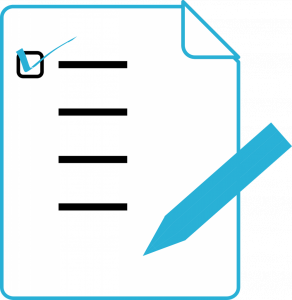Working Over Winter Break: How to Prepare Like a Magpie
Winter break is upon us. However, the savvy teacher doesn’t want to let everything slide from the end of one term to the beginning of the next. It would be lovely if everything could just be frozen in time: grade book, syllabus, readings, assignments, and extras could just hang there, waiting for the next moment you needed them.
But life doesn’t usually work out in that way. So what you want to do is prepare a bit at a time. Take it easy, but keep it steady. This will allow you to enjoy the coming school term, rather than working in a flurry of nerves and concern.
Step One: Anticipate Your Needs
What courses will you be teaching in the new term? Do you have an old syllabus that divides the assignments well, but needs to have the dates changed? That is relatively simple modification to make. Check through these ideas:
-
What are the dates for school breaks and holidays?
-
How many days will you have for conferences? Was this enough time last semester?
-
How many weekends will you be grading?
-
Was there enough down time between deadlines last time?
-
How much time will you allow for rewrites?
-
Will you add any reading/writing/lab/no class dates?
Once you have these thoughts down, you can modify your syllabus to suit the coming school term. If it is at all possible, give yourself a few weekends when there is no grading – this gives you and your students a breather.
Step Two: What Could Be Better?
I use a lot of Power Point presentations in my classes. They are clear, easy to set up and allow students to record information easily. However, there are times when a slide needs to be altered. This can be due to the fact that your textbook has changed, departmental policies have evolved, or you believe something could be made easier to understand. The place to start is the first week’s lectures.  Check them for the following:
Check them for the following:
-
Changed assignment dates/length requirements
-
Departmental policy rules that have changed
-
Room numbers/contact information that may have been altered due to construction, staff changes, etc.
The syllabus should contain a lot of this information, so you can base your slide changes off of the information you update in your syllabus. But you don’t have to have every slide set in stone before the semester begins: instead, prepare slides for the first week, then see how the class progresses.
Step Three: Gather like a magpie
You are a learned individual. That prpbably means that you read things out of habit. Grocery mailers, magazines, blogs, websites, waiting room materials, books, pamphlets, recipes, food labels – yes, you read a lot! And you watch and listen to things, too – how-to videos, brief biographies, radio interviews, and more. This is potential classroom material. You never know when a short article or a long interview may prove useful.
Collect those items!
-
Copy and paste the url
-
Save the PDF
-
Tear out the page
-
Grab an extra brochure
If it strikes you as being possibly useful, save it. Put it in an easy-to-find place and label it. A word document kept in your electronic teaching file can store many different web addresses for pieces that you think may come in handy later on. But you will want to label each reading, and perhaps include a tag with it, to explain how you could use it. When it comes time to prepare readings for your classes, you will have the address ready so that you can look it up and see if it is still relevant.
Save Now, Spend Later
If you have already taught the course, you may think that you have everything you need. But there is nothing to say that you have to stick with only one method of teaching. This goes for readings, especially.
Why is this? Information can grow old; the latest news on McDonald’s removing their dollar menu was hot off the press – years ago. There will be articles that you like, that you want to use again, and that you canuse over and over. But there will also be articles that were, perhaps, very relevant to all the soccer players in your one class. However, this year, you don’t have any soccer players. Change, then, is a very necessary thing.
Collect reading ideas for those rainy days when your interest bank is running low. It helps to have a few things picked out ahead of time so that you aren’t cramming it together the day before a lecture.
Magpie Magic
Gathering information during winter breaks means that you should have a good collection of pieces from which to choose when you are in the middle of the semester. It’s like having a mad money fund, ready for any emergency. Teaching is a consuming occupation, and when we’re in the middle of things, it’s hard to take the time to hunt up new and interesting examples. But if you can collect piece here and there, it makes the end result easier to achieve. And that helps make you a better instructor.